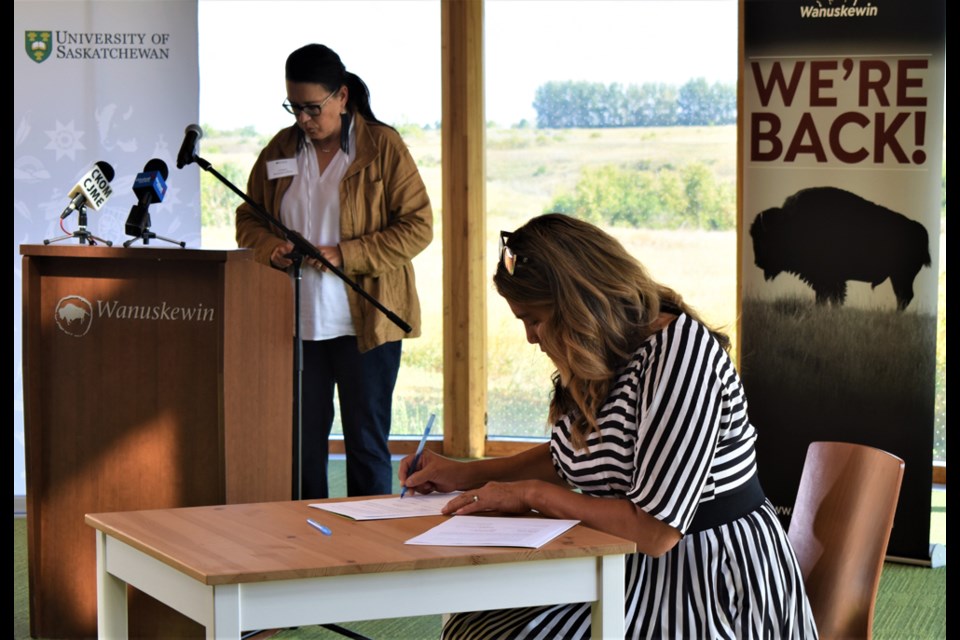SASKATOON — University of Saskatchewan and Wanuskewin Heritage Park renewed their years of cultural partnership on Wednesday, re-signing another memorandum of understanding that would further the latter’s designation of a UNESCO World Heritage Site.
The simple signing ceremony was held inside the visitor centre as it renews the agreement both parties made in March 2002, to further strengthen the importance of the relationship between USask and Wanuskewin Heritage Park.
Cultural resources, outreach programming, and facility use at both USask and WHP are the areas of collaboration that are outlined in the MOU. The agreement will serve as the foundation of a dynamic, productive, evolving partnership, and opportunities for growth and mutual development in Indigenous education.
Wanuskewin Heritage Park became a Provincial Heritage Property of Saskatchewan in 1983 with the help of the Meewasin Valley Authority and the City of Saskatoon. Four years after that, in 1987, Queen Elizabeth II named Wanuskewin as an official National Historic Site.
USask president and vice chancellor Peter Stoicheff said Wanuskewin has a rich history and a great archaeological site since it has been a hunting, gathering, and spiritual gathering place for Indigenous Peoples for more than 6,000 years.
“It stretches our understanding in concept of human endeavour about the fact that settlers are a part of its deep spiritual history for thousands of people… It is timely [MOU resigning] to do this and call attention to it, because Wanuskewin is in the process of developing a proposal for UNESCO World Heritage status.”
He added that WHP has a chance, realistically, to become a UNESCO World Heritage Site and the MOU can add more weight to that bid.
“An association with an academic institution, a major university like ours, can help with that process.”
“I’m proud that we can contribute to that effort because I’ve heard, from the very beginning, of representatives of that process when they came to Saskatoon that it would take the university to step up and be a part of a partnership to show that there’s a broad network of understanding and community engagement.”
Stoicheff added that the MOU strengthens their commitment that would lead to reconciliation.
“Indigenization is a pillar of our university plan, and our close relationship with Wanuskewin supports our commitment to transformative decolonization, leading to reconciliation. This memorandum of understanding is the embodiment of that commitment to collaborate, and a testament to the strong partnership between USask and Wanuskewin.”
WHP chief executive officer Darlene Brander said the MOU and their collaboration with USask is something that they can really be proud of and will have great support in the years to come.
“By continuing our relationship with USask, we affirm our commitment to growth and reconciliation.
“By building partnerships in connection to cultural and educational resources we, in turn, are strengthening our community. As we move towards UNESCO World Heritage Site designation, we are proud to have such strong support from our university peers that we have here and our educational stakeholders.”
USask senior director for Indigenous engagement Candace Wasacase-Lafferty hosted the event while Canadian Poet Laureate Louise Bernice Halfe read a poem to highlight the occasion. USask Archaeology and Anthropology professor emeritus Dr. Ernest Walker, PhD, also graced the occasion.



